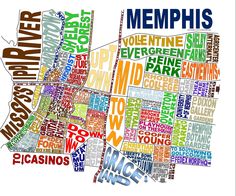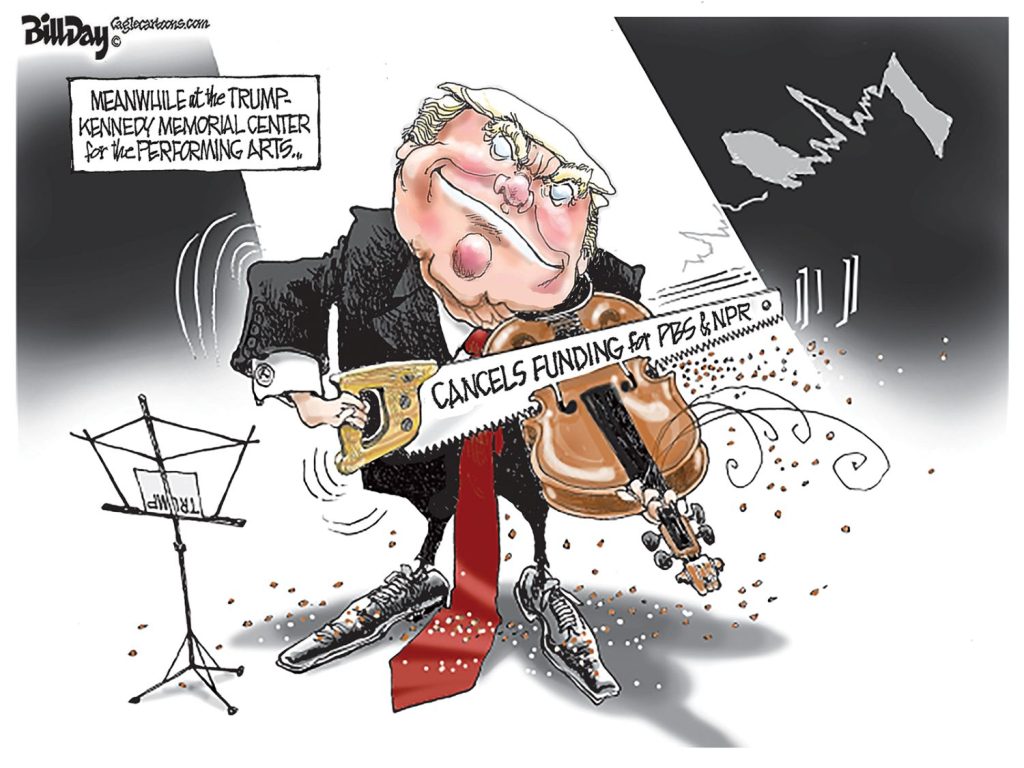It goes without saying that the front lines for Memphis’ battle for economic success, prosperity, talent, and progress are found in its neighborhoods.
They are the backbones for the city itself, and so much of Memphis’ future will play out there. Memphis must rebuild its neighborhoods but it also must concentrate and capitalize on opportunities to make strategic investments that define and propel the city’s economic fortunes.
These priorities are not mutually exclusive. In fact, they are the opposite sides of the same coin. To balance these priorities, to develop a clear plan of action, to create a plan of investment, and to leverage private capital and community energy, Memphis should consider an umbrella agency that can assume responsibility for these overarching objectives.
Now that the City of Memphis has tackled and eliminated the warehousing of poor families in large-scale public housing complexes, it should turn its undivided attention to applying the lessons it has learned to neighborhoods characterized by intractable poverty and the web of problems created by it.
A New Way To Attack Old Priorities
To attack Memphis’ most intractable problems with new vigor, the city needs a new vehicle to act as a strike force equipped with the financial resources and community solidarity and given the power to act boldly and inventively – the Greater Memphis Housing and Development Corporation. Funding could come from existing sources of funding for MHA and HCD and include public housing operating funds from HUD; public housing capital funds from HUD; Community Development Block Grant Funds from HUD; HOME Funds from HUD; program income from investments, and Capital Improvement Projects.
The agency would be patterned after similar organizations in other cities, where all public housing and community development programs and tools were merged into a single, productive entity. These include Metropolitan Nashville Development and Housing Agency, Portland Development Commission, Urban Redevelopment Corporation of Pittsburgh, Atlanta Development Corporation, Charlotte Mecklenburg Development Corporation, and San Jose Redevelopment Agency.
It’s hard to think of a better time for a stepped up focus on redevelopment of Memphis’ neighborhoods. The number of people in poverty in Memphis and the Memphis region has remained stubbornly high for 30 years and number of census tracts with concentrated poverty has doubled since 1970.
Children who escape from areas of concentrated poverty are the exceptions, not the rule, because poverty regularly begets poverty, which is the reason that the single-minded mission of the Greater Memphis Housing and Development Corporation should be to dramatically reduce poverty and increase income.
Shaking The Definition of Insanity
Current programs in Memphis are creating incremental progress, but then again, most cities are making incremental progress, and as a result, Memphis remains in the same relative position – at the bottom of the rankings for the economic indicators that matter most. With a bold plan of action for development, housing, and neighborhood revitalization, Memphis sends a compelling national message about its confidence as it faces the future and double down on its seriousness about producing the kind of change that is needed to improve the city’s trajectory.
The challenges facing Memphis are complex and challenging, and the Greater Memphis Housing and Development Corporation brings a new, creative, and nimble approach to capitalizing on opportunities, identifying and leveraging reinvestment, and revitalizing neighborhoods.
As we wrote recently, where someone is born largely sets the choices and determines the futures for one in four Memphians, because of the distinct geography of poverty that holds 151,000 Memphians in its grip.
It is estimated that about 5,000 youths between the ages of 16-18 and 23,000 19-24 year-olds live in these areas of concentrated poverty and they are neither in school nor in the labor market. These “opportunity youth” demand new, effective interventions. Based on Aspen Institute data, each youth creates an immediate taxpayer burden of $13,900 per year and an immediate social burden of $37,450. In the 20 years after each of these youths reach the age of 25, he (or she) will impose a future lifetime taxpayer burden of $235,680 and a social burden of $704,020.
Strike Force For Change
It is inarguable that these neighborhoods need interventions, reinvestments, and redevelopment, but doing what we’ve been doing and expecting different results wastes precious time. A development agency similar to those that have proven successful in other cities could be a crucial vehicle for a different future for Memphis neighborhoods.
It is in the enlightened self-interest of everyone in metro Memphis to attack with new purpose and innovation the problems in these neighborhoods which are about geography, but also about demography, pathology, etiology, and ideology. In other words, it is about place, data, problems, causation, and beliefs.
This new strike force for change would ultimately set a clear plan of attack to revitalize neighborhoods and to expand the economy. To succeed, its attack must be waged on several fronts at the same time, requiring precision, targeting, collaboration, coordination, and resources.
It’s campaign that mounts its attacks neighborhood by neighborhood, block by block, and family by family. And most of all, it’s a campaign mounted with collaboration with the neighborhoods themselves.
A Partial Agenda
Some areas for obvious action include:
* Blight reduction: cleaning up and ridding the core city of blight, abandoned houses, and other physical manifestations of neglect and abandonment, such as doubling and tripling the current program to attack problem properties.
* Improved housing: providing for decent, clean, and affordable housing to create stability and sustainability, particularly for children since their transiency makes it difficult to create consistent and stable learning environments; providing housing options for all at-risk groups, including SRO’s for single adults, and housing for seniors from the adaptive reuse of public buildings such as schools, and the homeless.
* Housing repairs: focusing on repairs to existing stock, demolishing dilapidated structures, acquiring foreclosed properties from banks/mortgage companies and working with nonprofits/for profits to repair and rent or sell, acquiring abandoned, foreclosed multi-family and single family properties.
* Social services: providing for a consistent support network with navigators for families, including child care, job training, and case management modeled after Memphis HOPE Health care – providing ongoing health care services, especially those related to obesity and diabetes, in sync with social services – or Assisi Foundation’s Transition to Success program which evaluates risk factors for each family and tailors individualized responses.
* Infrastructure: complete streets; enhanced neighborhood services and aesthetics to ensure the environment is clean and safe, including sidewalk and street conditions, lighting, and cameras, and public facilities are correctly located and sized for maximum use and economy.
* Education: focusing on children under 5 when social and emotional development is pivotal to academic success: pre-school education, quality day care, weekend tutoring, and a continuum of interventions from a network of collaborators.
* Public safety: enhanced lighting, installing cameras (requested by neighborhoods), and reducing blight to improve the environment and discourage unlawful behaviors.
* Economic development: strategic investments in game-changing economic engines, providing start-up capital for targeted neighborhood-based businesses, such as green jobs, demolition, clean-up, and retail; workforce training, and reducing the digital divide.
Building From Neighborhood Up
The core principle for this new approach is implementation of a neighborhood planning process that brings disparate and diverse voices to the table – all levels of government, business, grassroots, neighborhood groups, philanthropies, social service agencies, and more.
Greater Memphis Housing and Development Corporation would be designed to take a broad view of fighting for Memphis neighborhoods, including how to address the broad range of economic factors like sprawl that have contributed to present neighborhoods conditions. For example, there will be attention paid to blight as well as the impact on Memphis from I-269, and also historic preservation, transportation, public transit, economic development, neighborhood abandonment, and the impact of HUD’s site-based Section 8 housing that in effect recreated the large-scale public housing complex at the same time it was being eliminated by City of Memphis.
This new planning framework would promote a unified approach to collection of data including population changes and the needs for services and would integrate and coordinate all major projects efforts to achieve a single consensus focus by linking plans like the Blueprint for Prosperity, City of Memphis Five-Year Strategic Fiscal and Management Plan, Sustainable Shelby, Memphis Fast Forward, Metropolitan Business Plan, and Memphis Public Safety Plan.
***
Join us at the Smart City Memphis Facebook page for daily articles, reports, and commentaries that are relevant to Memphis.




Great ideas. I hope someone from the Strickland administration will take a look at this. Also I might add, for education, that several cities have implemented schooling for adults who might not have completed high school. It would be a nice start if the city, county, or even a charter school company would reuse closed school buildings for adult education/work training purposes.
Sounds like a new comprehensive planning team need to be ramped up with a $1,250,000 annual budget, 7 new neighborhood planning coordinators,5 new planning technicians, a drafting section, a copy room for reports, an Aging Coordinator and staff, a Transportation Planning staff separate from the discredited MP) (who won’t stop roads in green places far from the beltway), a media center for all the twitter newsletters, etc. etc.
That should just about catch ya’ll back up to circa 1978 or so.
Who wrote this?
Great Post
Great Post